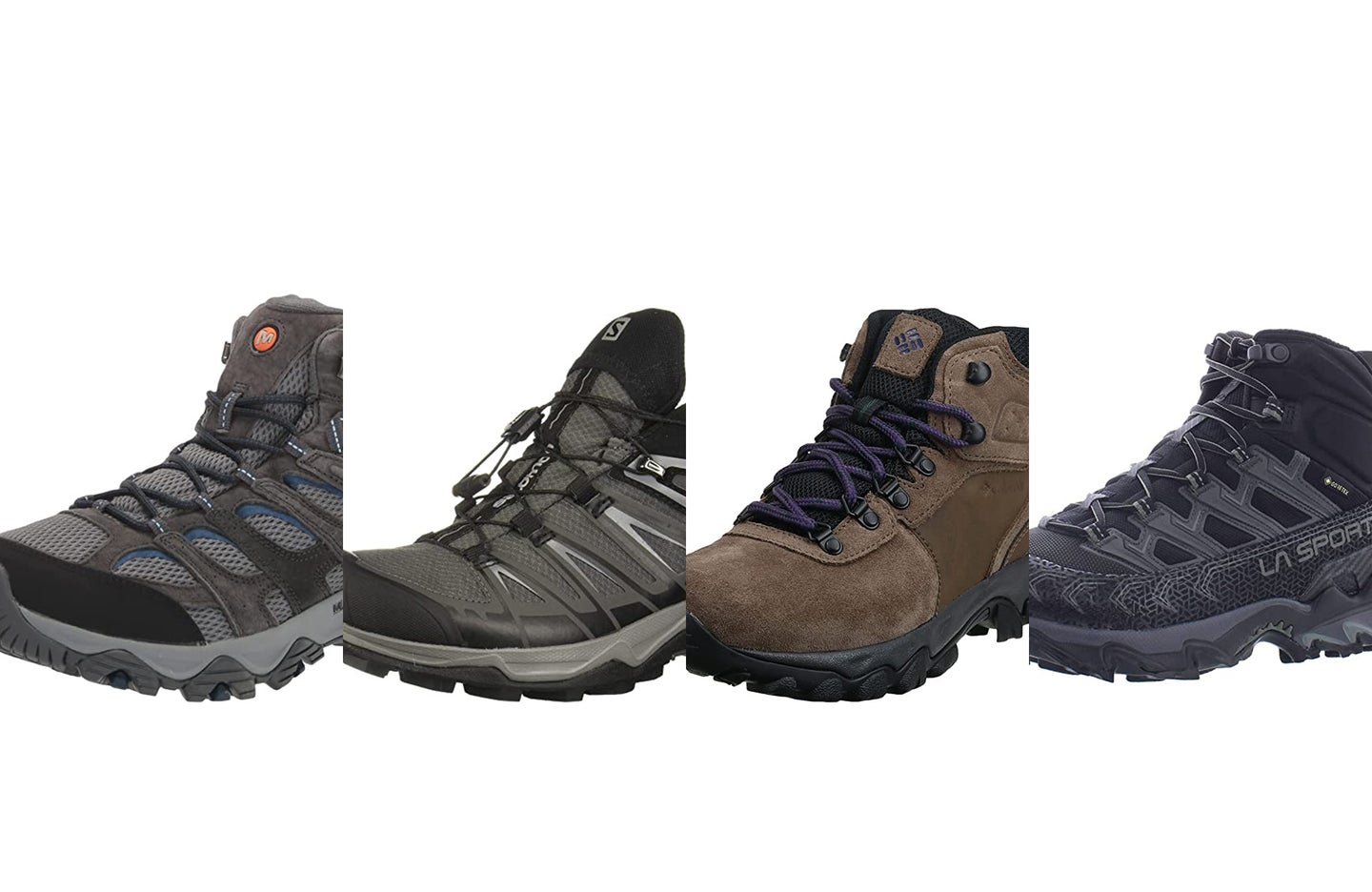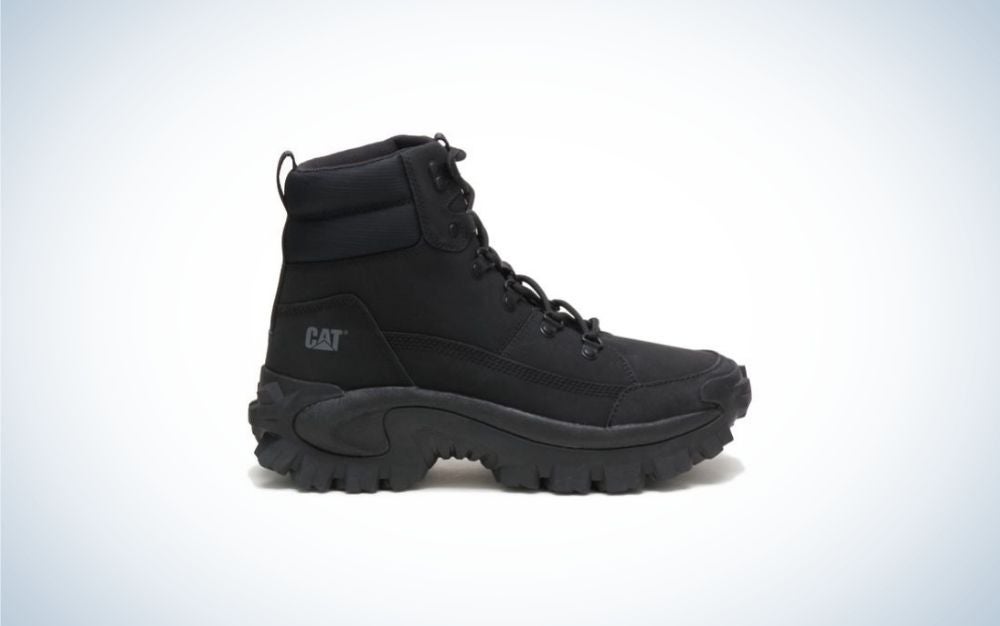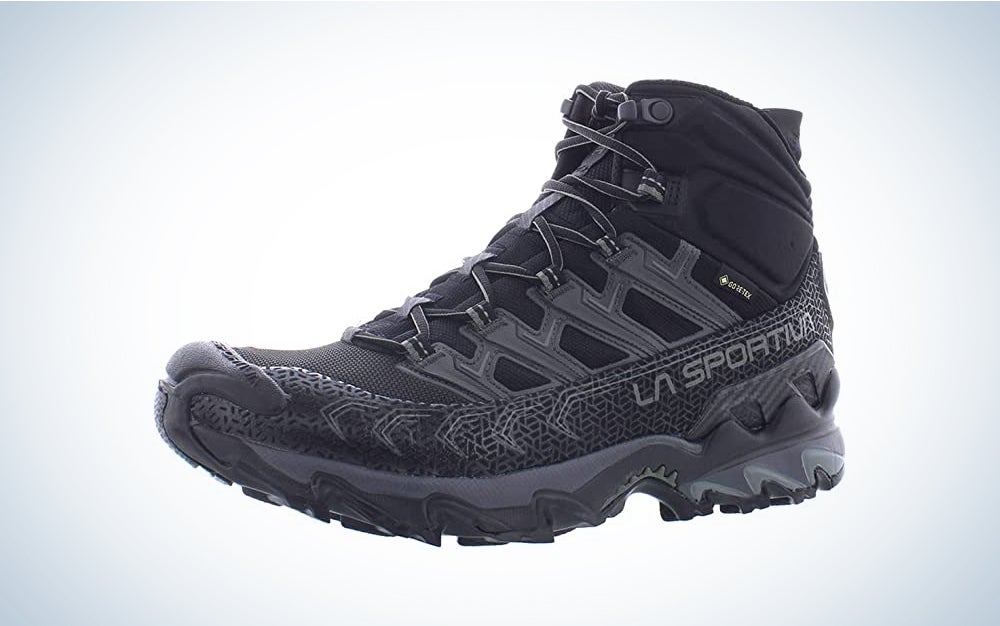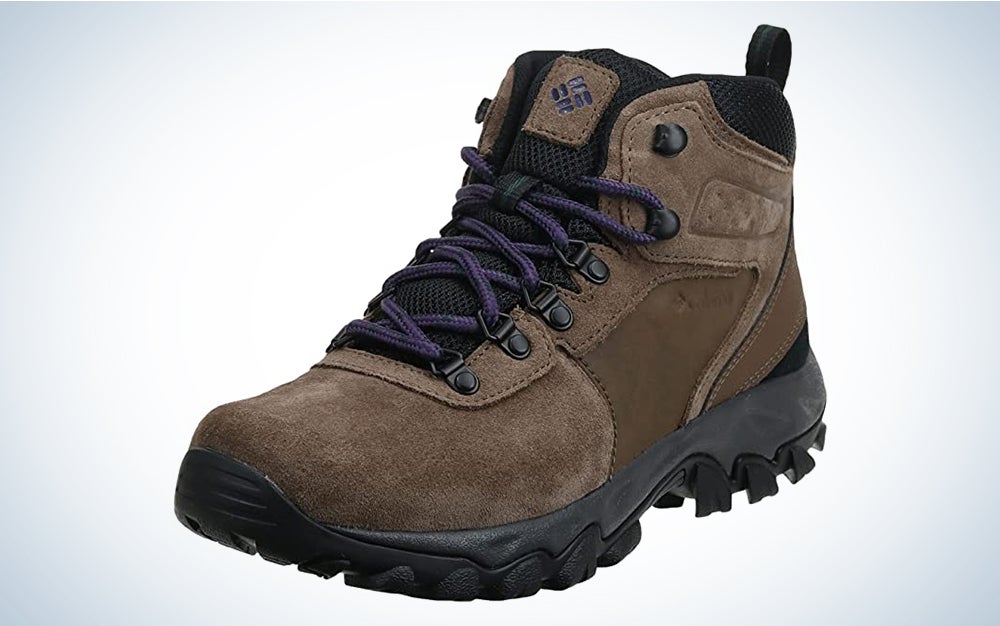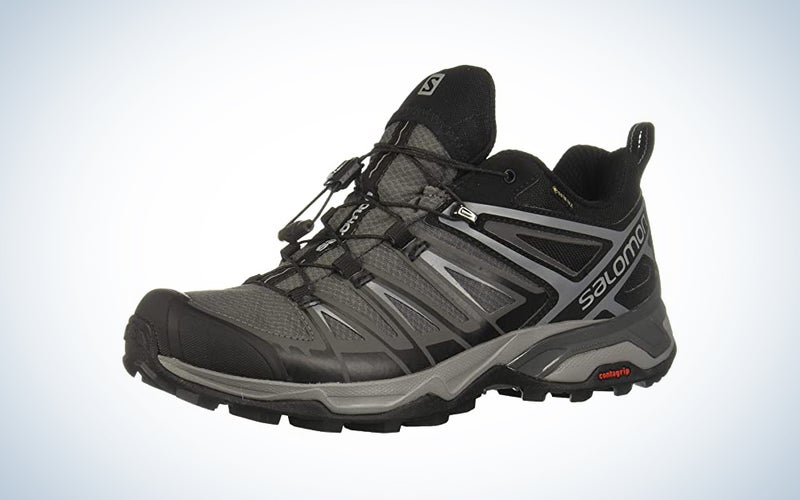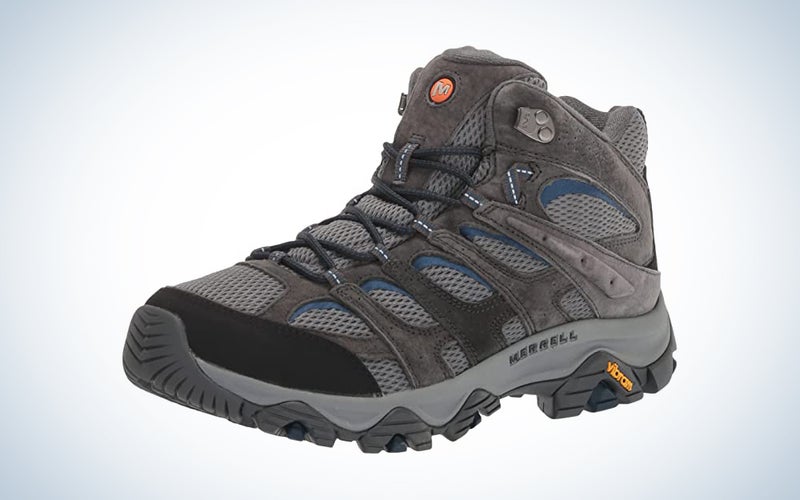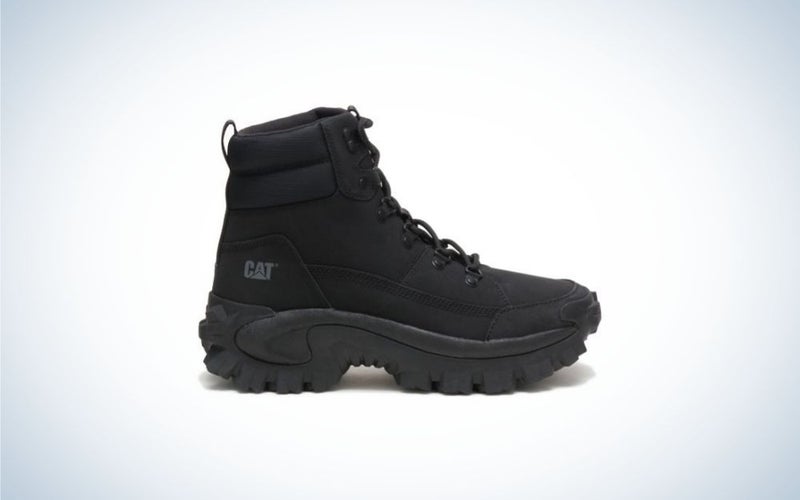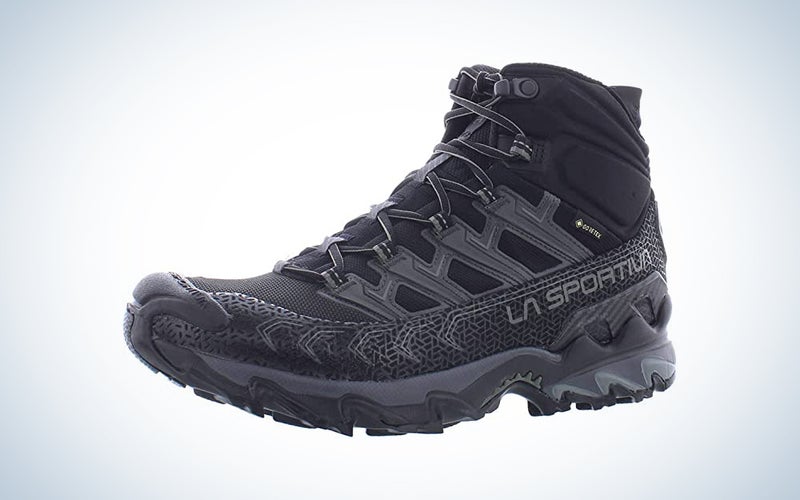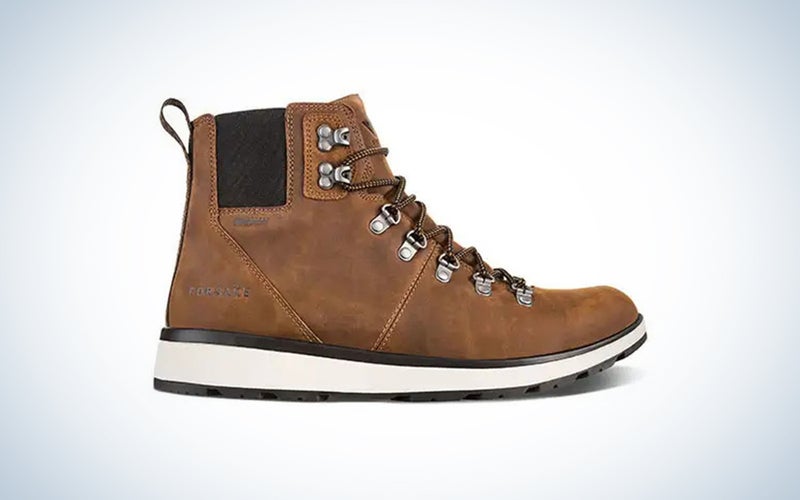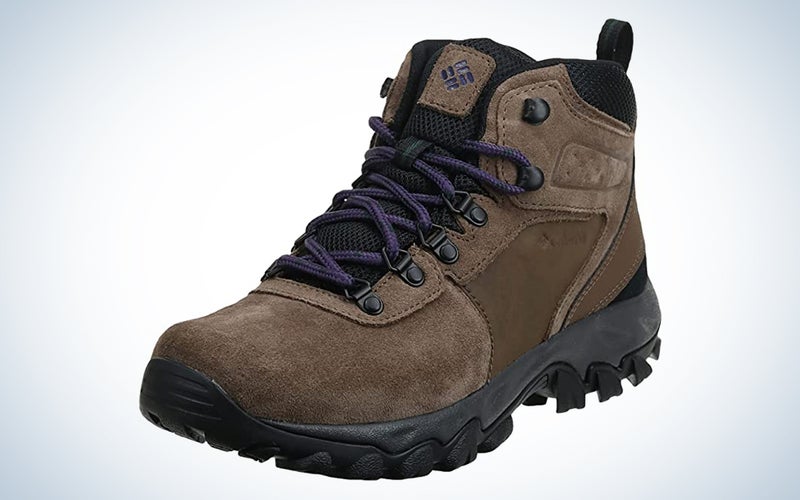We may earn revenue from the products available on this page and participate in affiliate programs. Learn more ›
Planning a nature walk at a state park? Heading on a multi-trek adventure through a mountain range? Just looking for a style of shoe that’s a bit more rugged? Whatever your reason, a good pair of boots is a must for all nature lovers. The wrong pair of hiking boots—whether they’re a bad fit or a subpar product—can cause any number of problems, including poor arch or ankle support, blisters, soggy feet, and a range of other uncomfortable and even painful issues.
The good news is we’ve done your homework for you. Expert mountain climbers and newbie hikers alike can avoid all the irritating scenarios above by investing in a pair of the best hiking boots that we’ve selected below. The best hiking boots will keep you looking stylish out on the trail, while simultaneously providing comfort and support to keep you safe and focused on the journey ahead.
- Best overall: Salomon X Ultra 3 GTX Men’s Hiking Shoes
- Best eco-friendly: Merrell Moab 3 Mid Hiking Boot
- Best durable: Cat Footwear Trespass Boots
- Best for backpacking: La Sportiva Ultra Raptor II Mid GTX Hiking Shoe
- Best stylish: Davos High Men’s Waterproof Outdoor Boot
- Best budget: Columbia Newton Ridge Plus II Suede Waterproof Hiking Boot
How we chose the best hiking boots
There’s nothing the gear desk loves more than getting out of the hustle and bustle of the city and touching grass. Some of us spend our weekends biking on freshly forged paths and hiking new trails. The excursions usually end with a cool, crisp alcoholic beverage at a brewery, but that’s optional. It’s mandatory for us, however, to be as informed on outdoor gear as possible—it is, indeed, part of the job. We found the best hiking boots by walking on dusty trails, city streets, and up rocky roads. We also looks at reviews and recommendations, along with performing heavy research.
The best hiking boots: Reviews & Recommendations
Leave your worries about nasty blisters and iffy ankle support behind with our best hiking boots.
Best overall: Salomon X Ultra 3 GTX Men’s Hiking Shoes
Salomon
Specs
- Materials: Textile, OrthoLite, elastic, PU-coated leather, Gore-Tex, EVA sole
- Type: Low-top with elastic laces
- Warranty: 2-year limited warranty
Pros
- Breathable
- Waterproof
- Can take from hike to work
Cons
- Narrow
- Run hot
These boots are fit to hit the trails or wear to work—the traction is excellent on all terrains, thanks to its Descent Control Technology, which helps safely descend from tough descends. Don’t worry about stepping in puddles—these shoes are waterproof, thanks to Gore-Tex. Additionally, a protective mudguard protects the lateral and medial sides of your feet from muddy trails. Anti-debris mesh prevents debris from being trapped in between your foot and the footbed. An EnergyCell midsole—made from high-performance EVA foam—reduces shock when you hike, which makes them extra comfortable. They’re a bit narrow, so you might want to size up or snag the wide version of the shoe. Plus, they run hot, meaning they might not be the best for use in warmer climates—those with sweaty feet, beware. The comfort outweights our feet getting sweaty, which was bound to happen anyway.
Best eco-friendly: Merrell Moab 3 Mid Hiking Boot
Merrell
Specs
- Materials: Pigskin leather, mesh, nylon, EVA foam
- Type: Medium high top with elastic
- Warranty: 60 days
Pros
- Durable
- Cushioned midsole
- Vibram outsole
Cons
- Run small
- Not waterproof
The Merrell Moab has been many a hikers’ boot of choice for more than a decade—25 million hikers, to be exact. That’s a lot of people. And there’s lots to love about this shoe, like its supportive insole, cushioned midsole, and grippy Vibram TC5+ outsole. This multisport show can handle the regular outdoors, along with mountain biking, snow sports, and water sports. The outsole’s non-marking formula helps with grip, traction, durability, and flexibility. We love that the shoe is made out of partially recycled fabrics. And, the company is dedicated to sustainability—by 2025, it plans to include recycled, organic, or renewable materials in everything it makes. Plus, it has a dedicated recycle and resell program, meaning less shoes in the landfill for a better future.
Best durable: Cat Footwear Trespass Boots
CAT
Specs
- Materials: Rubber, nylon, coated leather, EVA foam
- Type: Medium high top with hooked eyelets
- Warranty: N/A
Pros
- Unisex sizing
- Stylish
- Water-resistant
Cons
- No warranty
- Not waterproof
These Caterpillar boots come in dark black and a lighter beige shade, as well as unisex sizing, so everyone can find what works for them. They feature a soft and breathable nylon mesh sock lining, a footbed made from soft EVA foam which is great for long-term comfort, and a durable rubber outsole ideal for traction. Plus, their chunky soles are trendy enough to wear when you’re hitting the streets instead of your favorite hiking trails. Cat Footwear’s Trespass Boots will keep you warm, safe, and stylish in the face of all sorts of weather, from snow, rain, and sleet to desert heat and milder climates and environments. Although they’re not waterproof, they are water-resistant. Despite the lack of a warranty, the company does offer returns on products that have manufacturing or design defect.
Best for backpacking: La Sportiva Ultra Raptor II Mid GTX Hiking Shoe
La Sportiva
Specs
- Materials: Gore-Tex, polyester, textile, nylon, OrthoLite insile
- Type: Medium high top with hooked eyelets
- Warranty: 1 year
Pros
- Light
- Waterproof
- Almost no need to break them in
Cons
- Expensive
These durable hiking boots are designed to withstand hard conditions on unpredictable terrain—an important consideration for backpacking, since you never know how the weather will turn or what a trail will entail. The shoes’ AirMesh is abrasion-resistant and breathable, thwarting sweat and blisters. Protect your ankles from high brush with the boot’s built-in comfort collar. A transkinetic EVO heel stabilizer and FriXion outsole provides control and traction on different kinds of terrain—and an anti-shock rubber toe cap prevents your toes from succumbing to a pesky lone rock. Even the laces are filled with science, with a durable lacing system that distributes tension evenly throughout the shoe. Most importantly, these shoes are lightweight, clocking in at just over a pound—important when you don’t want too much weight on your back.
Best stylish: Davos High Men’s Waterproof Outdoor Boot
Forsake
Specs
- Materials: Leather, elastic, memory foam, EVA sole
- Type: Medium high top with hooked eyelets
- Warranty: 1 year
Pros
- Comfortable boot with rugged waterproofing
- Climate-neutral certified company with carbon offsetting
- Recyclable packaging
Cons
- Leather scuffs easy
Exit from the pine grove, and step right into the office; the Davos Waterproof Outdoor Boot is classy enough to impress your boss at the architecture firm and rugged enough for rock hopping on the Nantahala. This high-top boot features two rungs of open-hooked eyelets with a gusseted tongue that attaches on its sides to keep out snow slush. It features memory foam padding, an elastic band to keep its top fitting smoothly, and an EVA midsole. Ready for cement or freezing rain, this is a good crossover boot for cities and country. With carbon offsetting built right into the company, and cardboard, recyclable packaging, you won’t have to feel too guilty about your purchase. The boots’ only downside is that the leather exterior does have a penchant for scuffing. Still, scuffs are easy to buff out, and we think that with so much going for it, the Davos is well worth its moderate asking price.
Best budget: Columbia Newton Ridge Plus II Suede Waterproof Hiking Boot
Columbia
Specs
- Materials: Rubber, suede, leather, synthetic textile
- Type: Medium high top with hooked eyelets
- Warranty: One year
Pros
- Waterproof
- Comfortable
- Durable
Cons
- Run narrow
These Columbia hiking boots are great women’s hiking boots as well as men’s hiking boots. They feature a cushioned yet lightweight midsole and rubber outsoles that are great for gripping various types of terrain. Made from full-grain leather and suede, featuring a scratch rubber heel, mesh tongue, and metal outdoor hardware that will last, these Columbia hiking boots get high marks for being completely waterproof. Truly, we mean they’re completely waterproof: even the seams are protected with seam-sealed construction. Thanks to the sole’s multi-terrain traction system and dual-zone winter tread pattern, this pair is ideal for trail hiking and is a great pick for hikers on a budget who don’t want to sacrifice quality.
What to consider when buying the best hiking boots
Choosing the perfect hiking boots is a different process for every person, depending on how often you plan to use them, the terrain where you plan to trek, and, of course, how they feel on your own feet. That said, there are a number of factors that folks may want to take into account when shopping for a superior boot.
Type of hiking boots
Not all hiking boots are made equal, as different types of boots have been designed for different purposes. More or less, hiking boots can be divided into three subgroups: hiking shoes, hiking boots, and backpacking boots. Hiking shoes are typically low-cut and are great for an easy day hike. Some people using shoes for this purpose will even suffice with a light trail runner, depending on preference. Hiking boots are a step up, great for more intense day or multiday treks with a light carry load. And, finally, backpacking boots are the most serious of the three types, ideal for those planning on going out into rough terrain for multiple days, while carrying a heavier load. If you’re planning on going on a multiday trek, be it in your home state or across the Andes, a proper backpacking boot is a must-have. The boots you choose will need to be tested out prior to your trip, but once you’ve broken them in, they’ll give you all the safety and durability necessary for a successful and safe trek.
Materials
Understanding how a hiking boot is made is key to knowing if it’s right for you in terms of comfort, durability, breathability, and resistance to water. Some of the most common materials you’ll see are synthetics (like nylon and polyester), split-grain leather, and full-grain leather. Synthetic materials typically are light, less expensive, and are easier to break in, but they may need to be replaced sooner than other materials and also are less water-resistant. Split-grain leather boots are generally paired with nylon material for a boot that is fairly light and quite breathable. They aren’t the most water-resistant. Full-grain leathers will be the most expensive of the bunch, but are great in terms of durability, water resistance, and can handle all types of terrain. That said, they take the longest to break in.
Support & fit
Consider your cut: low, medium, or high. The higher cut you have, the more ankle and balance support you’ll have. This also impacts its overall weight.
Once you’ve identified the boot that meets your needs, try it on! You’ll want to make sure that the fit is snug but not too snug, and that the boot will work with various types of socks and orthotics if you need them. Give them a test walk and know that it’s necessary to break in your boots before setting off on a long outdoor adventure.
Sustainability
As a nature lover setting out to enjoy the earth’s bounty, you may be especially mindful of the materials and processes involved in manufacturing your hiking gear. It has become much easier and increasingly important to find eco-conscious products that are made with sustainability in mind. Nowadays, many popular brands focus on ethically produced products, lower carbon emission sources, and other environmentally sound practices to provide hiking boots and other high-quality gear that you can feel good about wearing.
Durability
People often prefer to shop for one pair of high-quality, enduring boots that will last over many years of wear and tear. If that sounds like you, one of the most important things to consider when investing in the best hiking boots is durability. You’ll want a pair that will last a lifetime, regardless of whether you’re going on day trips, hiking through a state park, or embarking upon serious multiday or multiweek treks all over the world. In order to be sure you’re making the right choice, check that the brand you’re interested in is reputable and the materials are reliable.
Budget
Need a pair ASAP but don’t want to spend hundreds of dollars? That’s completely fair. It is certainly possible to find a well-designed, durable, and comfortable hiking boot for less than $100. That said, hiking boots are a type of shoe that you don’t really want to skimp out on. The reason boots cost as much as they do comes down to their materials and their ability to keep you safe and secure over all different sorts of terrain.
If you’re looking for a budget-friendly boot, it’s recommended to stay around the $100 range—if you find something far beneath that price tag, you may end up getting a boot that will break down after just a few uses.
FAQs
Q: What is the best hiking boot on the market?
The best hiking boot on the market depends on the hiker in question, as people have different preferences in style and material, as well as different needs depending on their circumstances. That said, the best hiking boot is going to be one that matches your personal requirements in terms of type of shoe (e.g., hiking shoes, hiking boots, or backpacking boots), fit, and support. The ones listed above provide an array of options for various hikers.
Q: Who makes the most comfortable hiking boots?
People often have positive or negative past experiences with certain brands and, thus, they may prefer one company over another. However, brands such as Columbia, Timberland, Salomon, Cat Footwear, and Merrell are known to be reputable and offer numerous different boot options.
Q: How do you know if you are buying the right hiking boot?
Unfortunately, it’s hard to gauge whether you’ve bought the best hiking boots for you until you’ve gone outside and tested them a few times. Still, walking around the store a few times is your best option when deciding if you have a good fit and whether you feel adequately supported. Understanding your own footwear needs and how the design of the boot fits your foot and lifestyle should help you feel secure that you’ve bought the right pair for you.
Final thoughts on the best hiking boots
If you’re a nature lover, you know there’s nothing worse than hopping on a hiking trail only to realize 20 minutes in that you have a new blister forming—except, perhaps, not feeling secure in the amount of ankle support provided for a multiday trek. Both scenarios highlight the importance of investing in the best hiking boots for you and your particular needs. Think hard about where, when, and how long you’ll be wearing your new boots. Doing thorough research ahead of purchasing will help you decide on the type of boot you need, the materials that best suit you, and other important features. Say goodbye to blisters and poor support, and hello to the gorgeous landscapes that await—on and off the trail!
